
I’ve been enjoying working with some of the red wine fermentations this week. Wines are fermented here in two different formats. First, there are the small poly bins which take about a ton and a half of grapes, and which are suitable for small lots, or working with 100% whole bunches. These are placed on wooden pallets so they can be moved around as needed. And then there are the closed 1o ton stainless steel tanks inside the winery. These are usually filled about half way for red wine ferments.

First of all the small polls. There are three ferments that I’ve been attending to, all 100% whole-bunch Pinot Noirs. After filling, each of these was foot-trodden (it’s a bit uncomfortable when the grapes are straight out of the cold room) to release some juice and get things going. As the grapes are cold, fermentation takes a few days to get going: these are wild ferments (they aren’t inoculated by cultured yeasts; in fact, they have nothing added except for grapes).


One of my jobs has been to make sure the cap stays wet. If they are left, the grapes at the top will dry out and begin to form vinegar (through bacterial action), raising the volatile acidity to problem levels. On a normal ferment with destemmed berries there’s a lot more juice around and the skins float to the top, forming a thick cap. Normally, this would be punched down in order to fully wet the cap and mix things around a bit. In a whole bunch ferment, it’s pretty much all cap, in that there’s a lot of material present, including stems and intact clusters, and you can’t punch it down until much later in the ferment. So I take the top layer of grapes and stems and turn it all over with my hands. I also make a well in the ferment so I can get a jug and pour juice all over the top layer to wet it properly. Then I flatten it all out, and clean round the edge of the poly bin, and put the lid back on. It’s all very hands on, and there’s something great about getting so close to the fermenting wine.
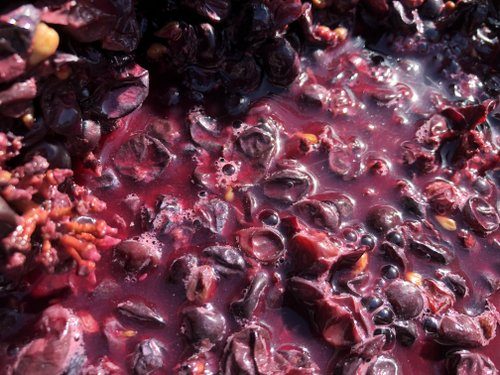
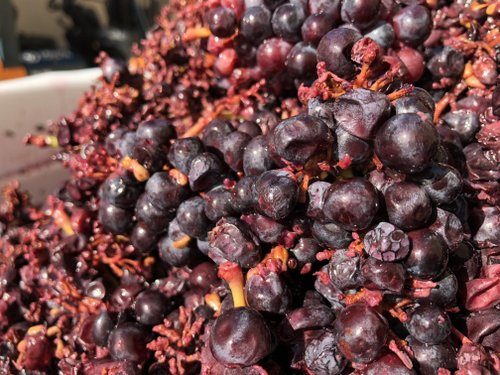
I’m actually a big fan of light extraction. You can punch down too much if you aren’t careful. There’s something to be said for just keeping the cap wet by bucketing over the ferment – as light and extraction as is possible. Ferments do like oxygen, though: especially bigger ones in larger tanks.

For the larger tanks, most have a bit of whole bunch on the bottom, and the rest is destemmed and then dropped into the tank from the hopper. For these tanks, when there’s a fair bit of whole bunch they are tricky to punch down manually, so we use a hydraulic punch down device that can be moved around the cellar on rails in the roof.

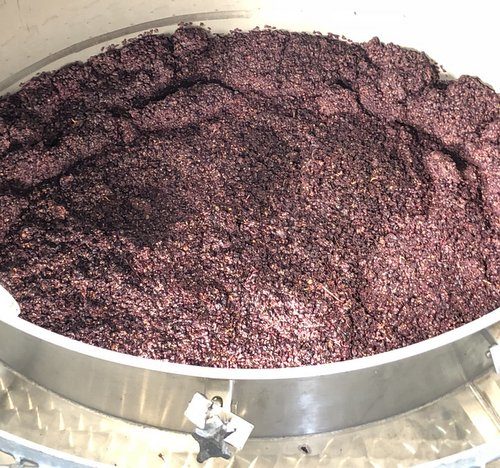

An alternative to punching down is pumping over. Once ferments are underway, they can get a bit stinky, and sometimes an aerative pump-over is needed. Wine is taken from the bottom of the tank (it goes through a sieve to pick out berries and skins) and then it’s pumped over the top of the cap.
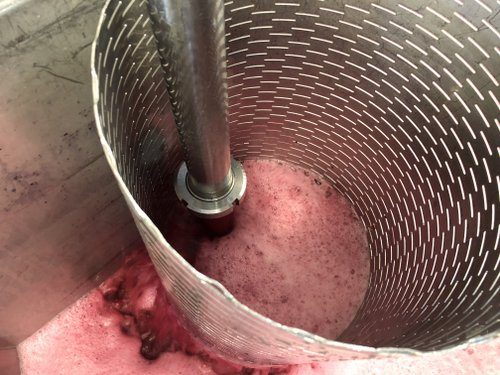
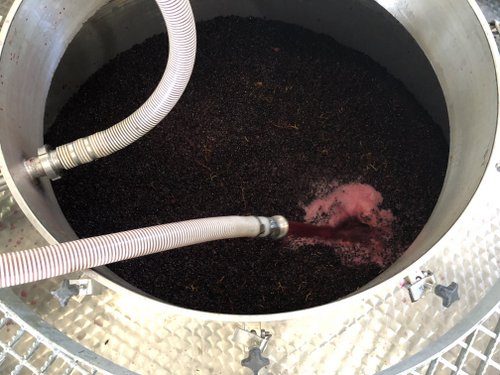

All this is quite satisfying. While fermentation is underway the wine needs oxygen: it helps the yeasts perform better and they produce more sterols in their cell walls, which then makes them better able to deal with the stresses later in ferment as the alcohol rises. As ferment slows, the wine will be protected more from oxygen, and after ferment, it should see very little. The tanks or bins will be closed up for a bit of post-ferment maceration (this actually makes them less tannic, as the pulp of the grapes fines the tannins), and then they will be drained, pressed, and sent to barrel for several months to a year, or sometimes even more.
Harvest at Gabrielskloof:
- Managing red wine ferments
- Vineyard sampling
- Collecting grapes
- Pressing Chenin Blanc and sorting Pinot Noir
- Pressing Grenache Gris and barrel work
- The final instalment
Leave a Comment on Harvest at Gabrielskloof: managing red wine ferments